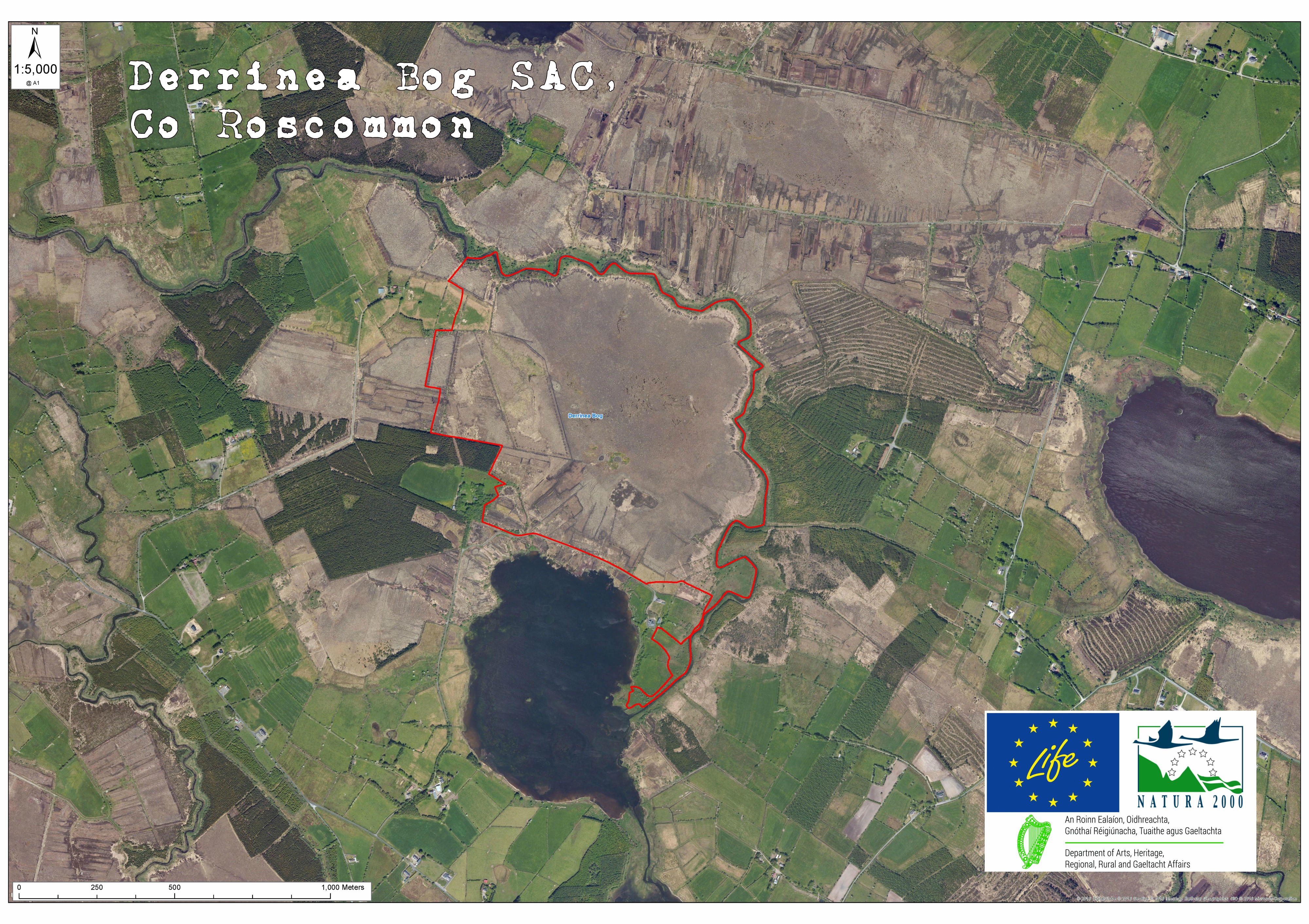Derrinea Bog History & Locations
Derrinea Bog SAC has a unique location in terms of our 12 project sites. Its lakeside location makes it a very interesting area.
Cloonagh Lough is a freshwater lake in the catchment of the Boyle River. The area of the lake is estimated to be 0.71 square kms with a large catchment area of some 47.93 square kms.
It is not extensively recorded if Cloonagh Lake beside the bog has significance, but a pair of crannóg sites on the lake would seem to indicate an ancient use and importance. According to a 1953 report from the Royal Society of Antiquities of Ireland, the river Anaderryboy enters the lake at the south western angle and carries down water through the large Keelbanda bog areas and the Feigh turloughs from Cloonagh Lough, Urlaur Lough and Errit Lough.
It eventually flows into the River Lung which, in turn, feeds the principal supply of water to the larger Lough Gara, a site of huge amenity and tourism value to the county.
Interestingly, Derrinea raised bog is located just 5km north-northwest of another of our raised bog project sites, Carrowbehy/Caher Bog which is much more visitor friendly.
At one stage this was huge raised bog territory. It is estimated there are approx. 70 bogs to be found in Roscommon, with the majority remnant raised bogs, but some blanket bogs occur on high ground in north Roscommon at Kilronan and Corry Mountain.
However, the history books did not necessarily rate this once very wet part of Roscommon with any great love. The Atlas and Cyclopedia of Ireland in 1900 wrote of the area: “In the western corner of the county are Loughs Errit, Cloonagh and Cloonacolly, beside each other; east of which is Lough Glinn (which gives name to the Village beside it), with finely wooded shores, an oasis in the midst of a bare, bleak district.”
The boggy district here was much referenced. The same publication notes this part of the county being of “the greater part flat, with much bog and marshy meadow land.”
A lot of this bog has been since been exploited.
The county takes name from St Coman. In the beginning of the 8th century, St. Coman founded a monastery where the town now stands; and the place was called from him Ros-Comain, Coman’s Wood.
Local links:
http://www.visitroscommon.com/ – Plenty of information on what to see and do in Roscommon county.
http://www.roscommon.ie/ – Portal for county local enterprise, local authority and tourism.
https://www.facebook.com/roscommon.ie/ – Active Facebook page celebrating the county.
http://www.discoverireland.ie/places-to-go-location/roscommon/22 – Discover Ireland’s take on Roscommon.

